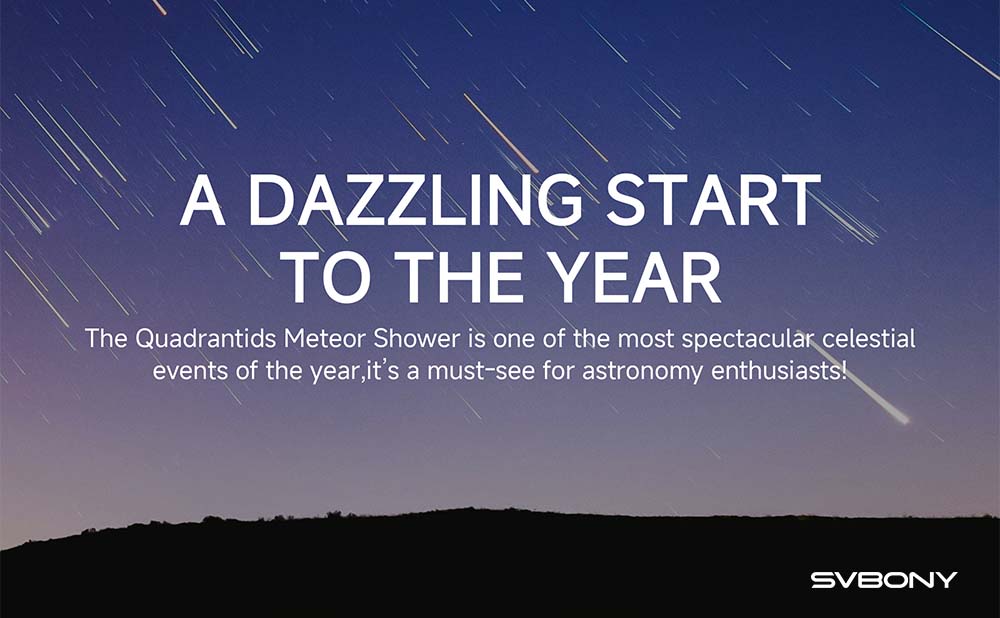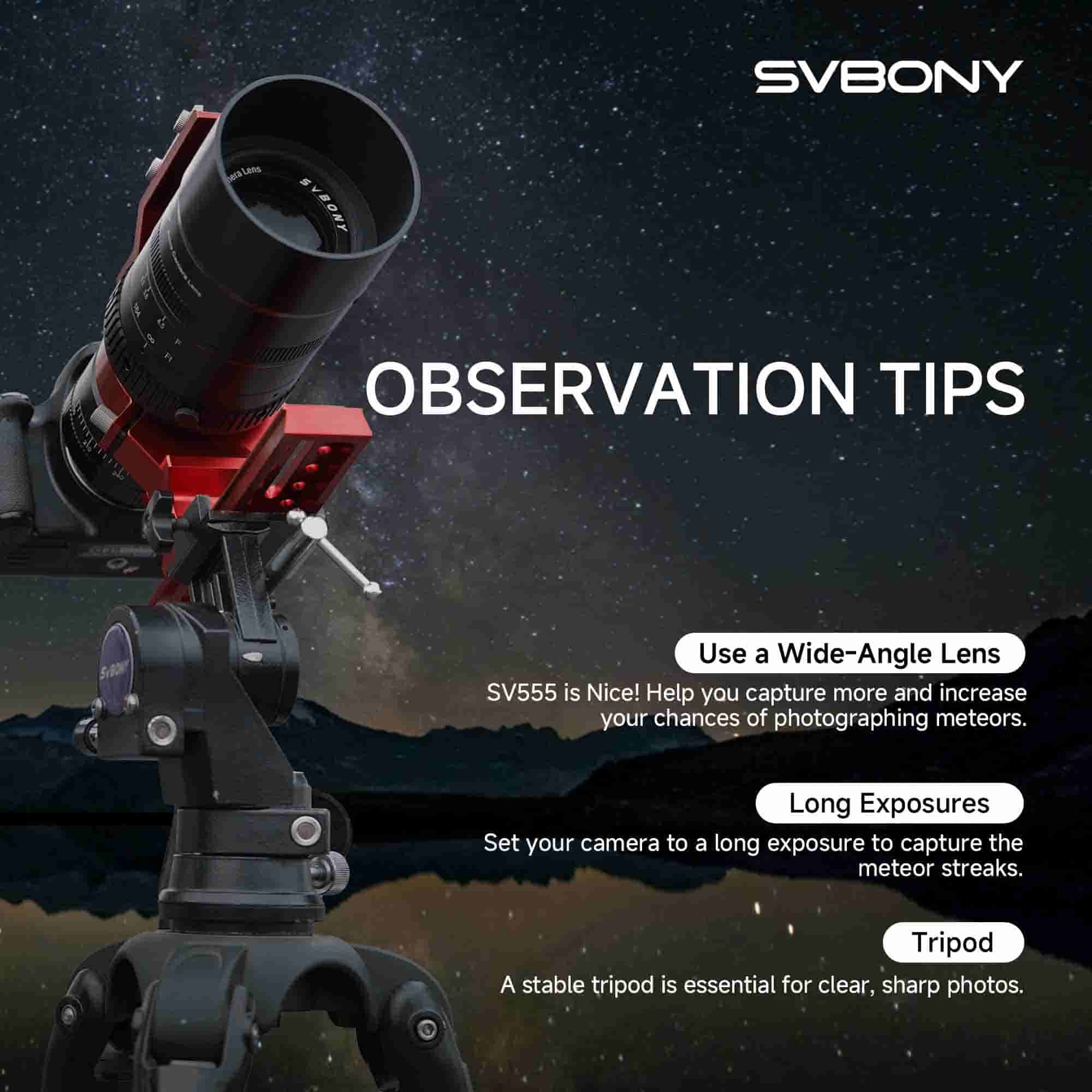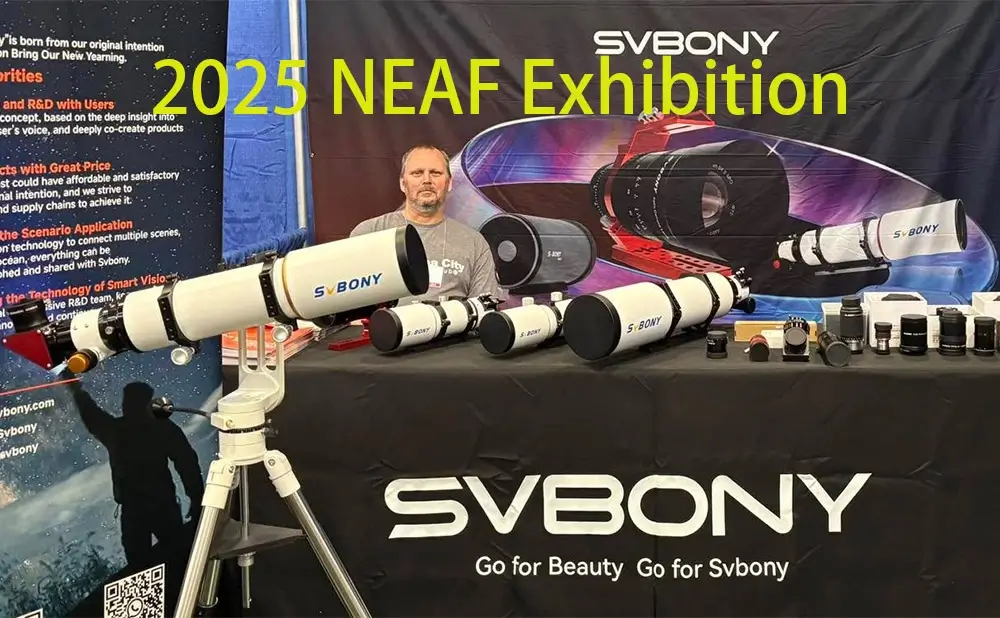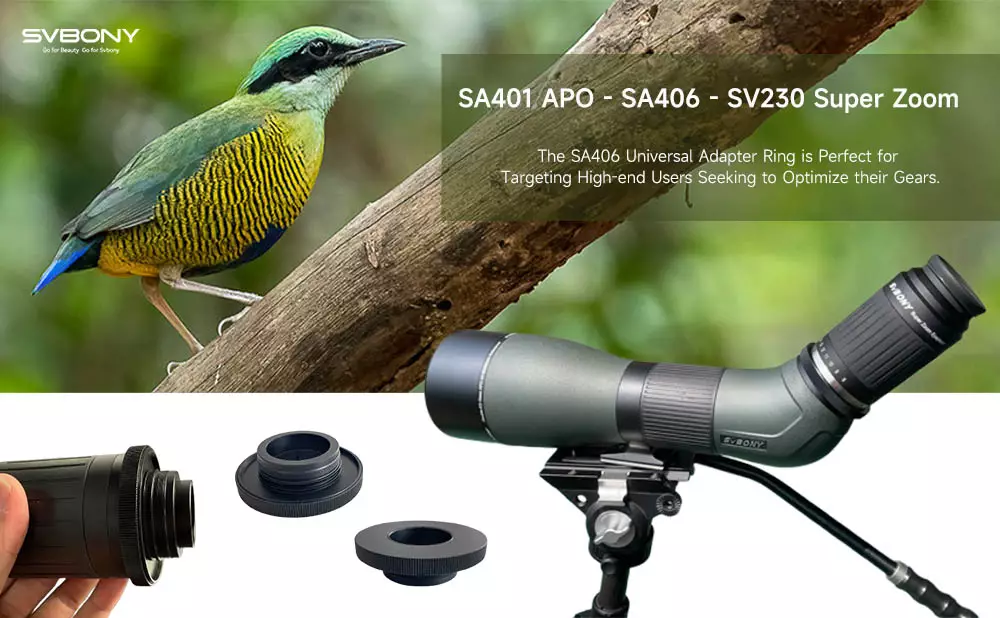A Dazzling Start to the Year: Quadrantid Meteor Shower Observing Guide

A Dazzling Start to the Year: Quadrantid Meteor Shower Observing Guide
As the night sky changes, it’s another exciting time for astronomy enthusiasts—the viewing season for the Quadrantids. Every year in early January, this meteor shower brings us beautiful shooting stars, like bright stars streaking across the night sky. This article will provide a detailed observation guide to help you fully prepare and enjoy this cosmic feast.
Introduction to the Quadrantid meteor shower
The Quadrantid meteor shower is one of the most famous meteor showers in winter. Its active period is usually from December 28 to January 12 every year, but the best viewing time is generally January 3 or 4. This meteor shower is known for its bright and diverse meteors, with the number of meteors reaching more than 60 per hour, especially during peak periods. The parent comet of the Quadrantid meteor shower is "C/1490 Y1". This is a comet that has long since disappeared. The dust and small rocks left behind rub against the atmosphere when the Earth passes by, causing meteor phenomena.
Best time for observation
Active period: December 28, 2024 to January 12, 2025
Peak period: January 3, 2025
Best viewing time: midnight to pre-dawn
Select an observation location
One of the keys to successfully observing a meteor shower is finding a suitable viewing location. Here are some suggestions:
1. Avoid light pollution
Choose an open area away from city lights, such as a national park, mountain top, or in the countryside, for better views and a darker background.
2. Broaden your horizons
Make sure your viewing location does not have tall buildings or trees blocking your view. Meteors can appear from any direction, and a wide field of view allows you to catch more meteors.
3. Safe and comfortable
Choose a safe spot, preferably with a lounge chair or moisture-proof mat, so you can stargaze while staying comfortable.
Observation skills
1. Timing
Try to arrive at the observation location as early as possible to give your eyes enough time to adapt to the dark environment. Ideally, you should arrive around 10pm.
2. Find the radiant point
The radiant point of the Quadrantid meteor shower is near the Big Dipper, specifically in the northern sky. While meteors can appear anywhere in the sky, look in this direction and you'll likely see more of them.
3. Relax your mind
Please stay relaxed and patient when viewing the meteor shower. There are occasional lulls in the meteor shower, so enjoy the tranquility around you and listen to the sounds of nature.
Tips for shooting shooting stars
1. Use a Wide-Angle Lens
The SV555 astronomy lens is an excellent choice! It allows you to capture a larger portion of the sky, increasing your chances of photographing meteors. With a wider field of view, you'll be able to frame more celestial action in your shots.
2. Long Exposures
Set your camera to long exposure mode. This technique is crucial for capturing the stunning streaks of light that meteors create as they zip through the atmosphere. Aim for exposures between 10 to 30 seconds to effectively capture the movement.
3. Stable Tripod
A stable tripod is essential for ensuring your photos are clear and sharp. Since you're working with longer exposure times, any camera shake can result in blurred images.

Weather conditions
Always check the weather forecast before observing. The ideal viewing conditions are a cloudless and transparent night sky so you can enjoy more meteors. You may also consider adjusting your observation plan if the weather is not favorable that day.
Conclusion
The Quadrantids meteor shower is a must-see astronomical event in winter. We look forward to sharing this beautiful natural wonder with your family and friends in the night sky in January 2025. Let's look up at the stars together and wait for those shining meteors to pass by!
I wish you happy observing and many wonderful memories!








